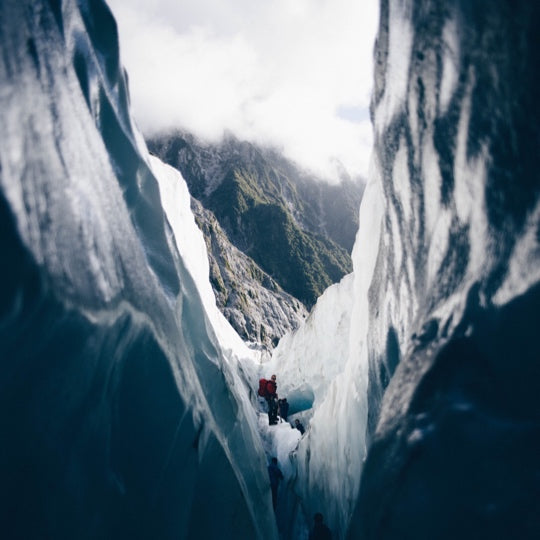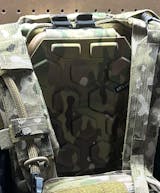Recognize and Prevent Hypothermia this Winter


So as I sit in my house with the heat cranked up to 71, I look outside and see snow covering the surroundings. This is the first real snow fall of the season and it’s causing mayhem. It is the kind of snowstorm where traffic grinds to a halt, offices are closed, and all of the milk and bread is wiped clean from the stores. So it’s about 3 inches. With this first snow we realize winter is coming and just because it is cold outside doesn’t mean we stop hiking, camping, exploring, or working out in the cold. So that brings me to the point of this article, hypothermia. Let’s take a few minutes and talk about some ways that we can better prepare for the cold, identify when hypothermia is becoming a problem, and how to treat it.
Hypothermia: Defined

Let’s keep it simple and call it a condition in which the temperature inside the body drops to a point below approximately 95 degrees Fahrenheit. A drop in body temperature can lead to a range of symptoms from shivering to death. When your body senses a drop in temperature it will begin to try to regulate the temperature and bring it up. There are lots of causes of hypothermia and certain groups of people are more at risk for hypothermia. There is a misconception that it must be cold outside in order for someone to get hypothermia. It simply needs to be colder that you are. There are many environmental factors - temperature, humidity, precipitation - that affect the temperature within our bodies. Small children and the elderly are groups that are more easily affected by temperature changes as they cannot regulate as well. Certain medications - sedatives (including alcohol), tranquilizers, antidepressants/antipsychotics, and some heart medicines - can impair your body’s ability to regulate temperature making you more susceptible to hypothermia. People with medical conditions like Multiple Sclerosis and hypothyroidism are more easily affected by the cold as well.
Hypothermia: Prevention

Preparation is the key to success here. I know we all want to get out there and do the things we love and some of us don’t plan as much as we should. Something as simple as checking the weather forecasts for your area and the area you will be traveling to can make a huge difference as it can help you plan the number and type of layers you will wear. Layering clothing is important as you can remove and replace the layers as needed to maintain a desired temperature. Let’s also take an honest look at the task we are setting out to do and our ability to achieve it. Wanting to head out to that 15 mile hike up the mountain, and then realizing you got winded while taking your gear out of the car. All that gear is going to add up to weight depending on what you will be bringing. Which brings me back to planning. What do you need for food, water, shelter, medical supplies, communications gear? Do you carry an extra blanket, hand warmers, water, and some snacks in your car for when those 3 inches of snow make you shelter in place? Letting a friend or family member know your plans and the best ways to contact you is a great step in the planning phase. Personally, I use the PACE methodology if I am planning a trip somewhere. I have a Primary plan, one I have worked out that includes travel, food, water, shelter, supplies. An Alternate plan, in case things don’t work out quite like I hoped they would (which is often). A Contingency plan, for those times where an unplanned event (not good, but not quite an emergency) occurs. And an Emergency plan, for when I need to immediately pack up, communicate, and get going possibly due to an injury or illness. That’s what seems to work for me. Planning is a crucial step for all emergencies, and especially important in hypothermia. With the right planning you can keep yourself safe and warm as you live out your dreams, or whatever it is that you find fun and exciting.
Hypothermia: Signs
I know not everyone that reads this is a medical professional and able to accurately diagnose hypothermia. I was a full time Paramedic for a few years and an EMT for plenty of years before that (I’m still a Nationally Registered Paramedic in case you were wondering). The National Institutes of Health, and various other agencies, use the phrase “umbles” to help people recognize the symptoms of hypothermia. This a great way to identify some of the motor coordination and level of consciousness related symptoms of hypothermia.
- Stumbles - a hard time walking or navigating objects
- Mumbles - difficulty speaking clearly of forming sentences
- Fumbles - trouble holding objects or using the hands/fingers
- Grumbles - incoherent noises like grunting
Hypothermia symptoms can also be categorized by severity:
Mild – shivering, pale skin, lack of complex coordination
Moderate – irrational behavior (removing clothes/not knowing the person is cold), pale skin, loss of fine motor function, intense shivering
Severe – shivering stops, unable to walk, heart rate slows, breathing is erratic, and muscles become rigid
Hypothermia: Treatment

So what can we do to help someone suffering from hypothermia? Well, it depends on how well you planned and how cold they are. For people that are showing signs of mild to moderate hypothermia (which includes frostbite) we can do our best to rewarm them. Move them to a place sheltered from the elements if possible. Whether it be a cave, car, or a dug out hole on the side of a mountain, we want to protect them from things like rain or wind. Add some additional layers of clothing if you can and begin to have them try and resume physical activity slowly. They are going to need food and drink as well, and no, alcohol does not count as a drink. Treatment for severe hypothermia is a little more challenging but can be achieved. Let me start by saying that this is a true emergency and you should have called for emergency medical assistance already. While you wait for EMS, wrap the person in approximately 4 inches of material/clothing/blankets/sleeping bags then wrap them up in an emergency foil blanket or similar. If they can drink, try warm fluids. If you have warm water bottles or heat packs you can place them near major arteries, neck/armpits/groin to help warm the person. Do not rub the skin in any fashion as it can cause more damage.
Hypothermia brings its own set of challenges to winter time activities. Whether you’re outside on purpose or are stranded somewhere by no fault of your own, proper planning and knowledge can save the day. In no way is this article a replacement for medical knowledge and the use of Emergency Medical Services. I suggest that everyone takes a few basic classes that cover things like bleeding control, airway management, heat/cold emergencies, and basic survival. You never know when you will need to be self-sufficient until help arrives, or in the case of zombies, doesn’t arrive.
Roger Schiffman, NRP, TP-C
Police Officer/ Paramedic - National Institutes of Health
Instructor - SOARescue
References/Citations:
Nagpal, B M and R Sharma. “Cold Injuries : The Chill Within” Medical journal, Armed Forces India vol. 60,2 (2011): 165-71.
National Institutes of Health. “Cold Weather Safety for Older Adults”, National Institute on Aging, https://www.nia.nih.gov/health/cold-weather-safety-older-adults
JJustad, MD, DDP. “Hypothermia”, Hypothermia and Cold Related Injuries, Health and Safety Guidelines, 2015, 1-7. https://dphhs.mt.gov/Portals/85/dsd/documents/DDP/MedicalDirector/Hypothermia.pdf
Curtis, Rick.”Outdoor Action Guide to Hypothermia and Cold Weather Injuries”, Outdoor Action, Princeton University, 12/4/2018. https://www.princeton.edu/~oa/safety/hypocold.shtml






Great read! Love the simplicity and easy to remember signs and symptoms. Look forward to reading more of your work!
Great read! Love the simplicity and easy to remember signs and symptoms. Look forward to reading more of your work!
Leave a comment